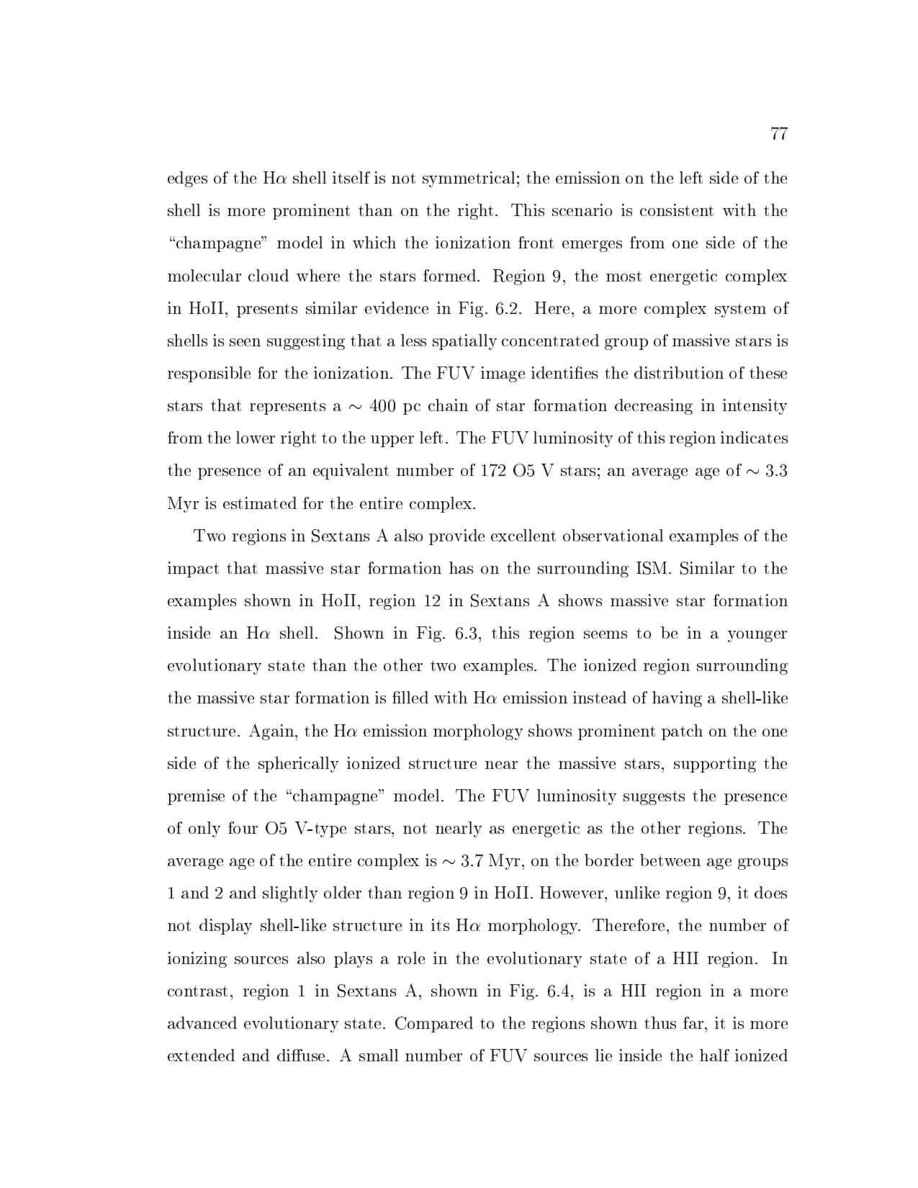
77
edges of the H shell itself is not symmetrical; the emission on the left side of the
shell is more prominent than on the right. This scenario is consistent with the
champagne" model in which the ionization front emerges from one side of the
molecular cloud where the stars formed. Region 9, the most energetic complex
in HoII, presents similar evidence in Fig. 6.2. Here, a more complex system of
shells is seen suggesting that a less spatially concentrated group of massive stars is
responsible for the ionization. The FUV image identi es the distribution of these
stars that represents a
400 pc chain of star formation decreasing in intensity
from the lower right to the upper left. The FUV luminosity of this region indicates
the presence of an equivalent number of 172 O5 V stars; an average age of
3
:
3
Myr is estimated for the entire complex.
Two regions in Sextans A also provide excellent observational examples of the
impact that massive star formation has on the surrounding ISM. Similar to the
examples shown in HoII, region 12 in Sextans A shows massive star formation
inside an H shell. Shown in Fig. 6.3, this region seems to be in a younger
evolutionary state than the other two examples. The ionized region surrounding
the massive star formation is lled with H emission instead of having a shell-like
structure. Again, the H emission morphology shows prominent patch on the one
side of the spherically ionized structure near the massive stars, supporting the
premise of the champagne" model. The FUV luminosity suggests the presence
of only four O5 V-type stars, not nearly as energetic as the other regions. The
average age of the entire complex is
3
:
7 Myr, on the border between age groups
1 and 2 and slightly older than region 9 in HoII. However, unlike region 9, it does
not display shell-like structure in its H morphology. Therefore, the number of
ionizing sources also plays a role in the evolutionary state of a HII region. In
contrast, region 1 in Sextans A, shown in Fig. 6.4, is a HII region in a more
advanced evolutionary state. Compared to the regions shown thus far, it is more
extended and di use. A small number of FUV sources lie inside the half ionized
